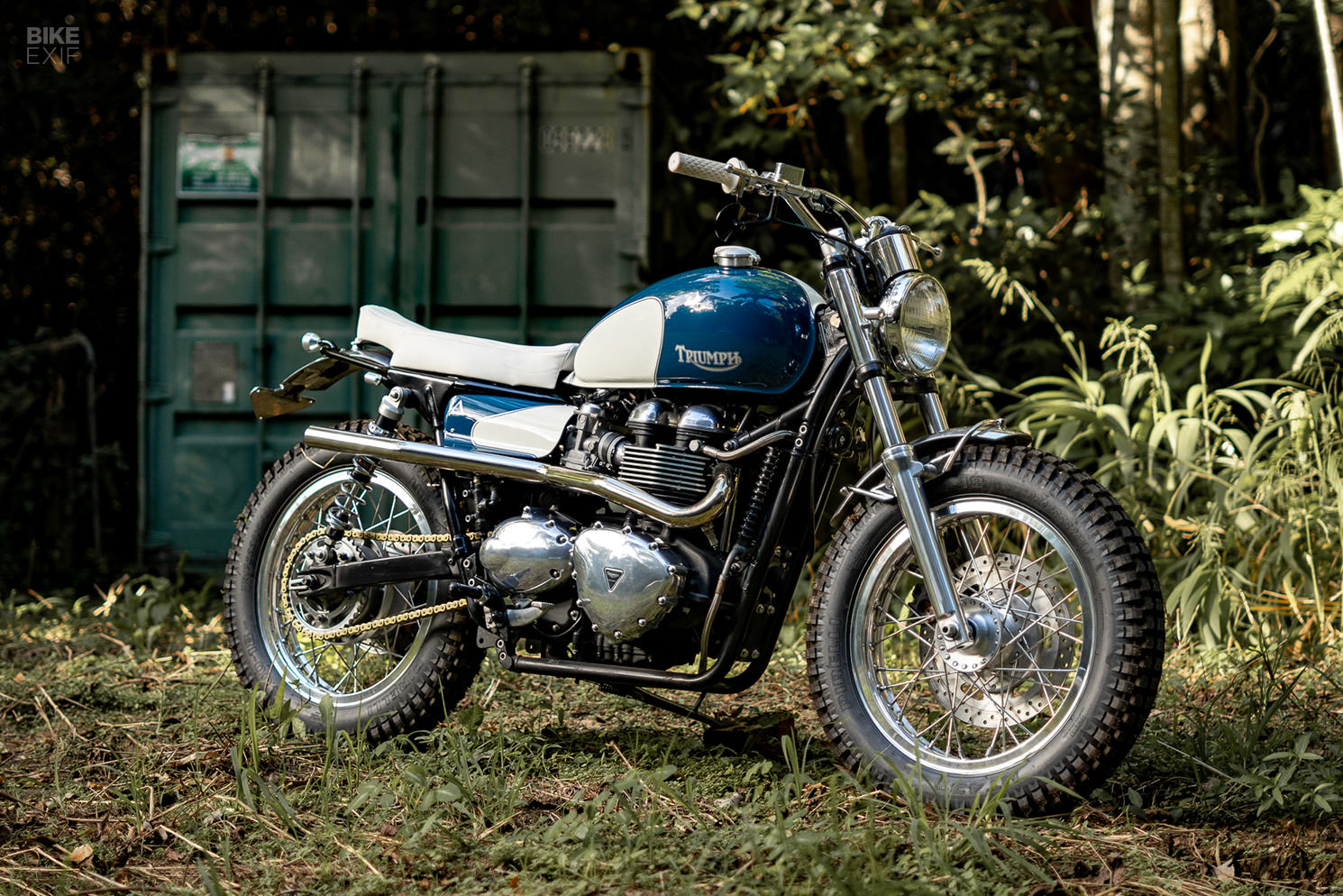
The best thing about modern classics is their ability to pass for vintage bikes on the street. Although seasoned motorcyclists know what to look for, most passersby can’t tell the difference between a modern Triumph Bonneville and a 1970s T140 as it zips past them. And it gets even better when you add some judicious custom work into the mix.
That’s the thinking behind this Triumph Bonneville desert sled, built by Purpose Built Moto on Australia’s Gold Coast. The inspiration came from the US desert racing scene of the 60s, and from a 1973 Triumph T140 that Purpose Built had just finished customizing. But their client wanted old school style with new school reliability, so they settled on a 2007-model donor.
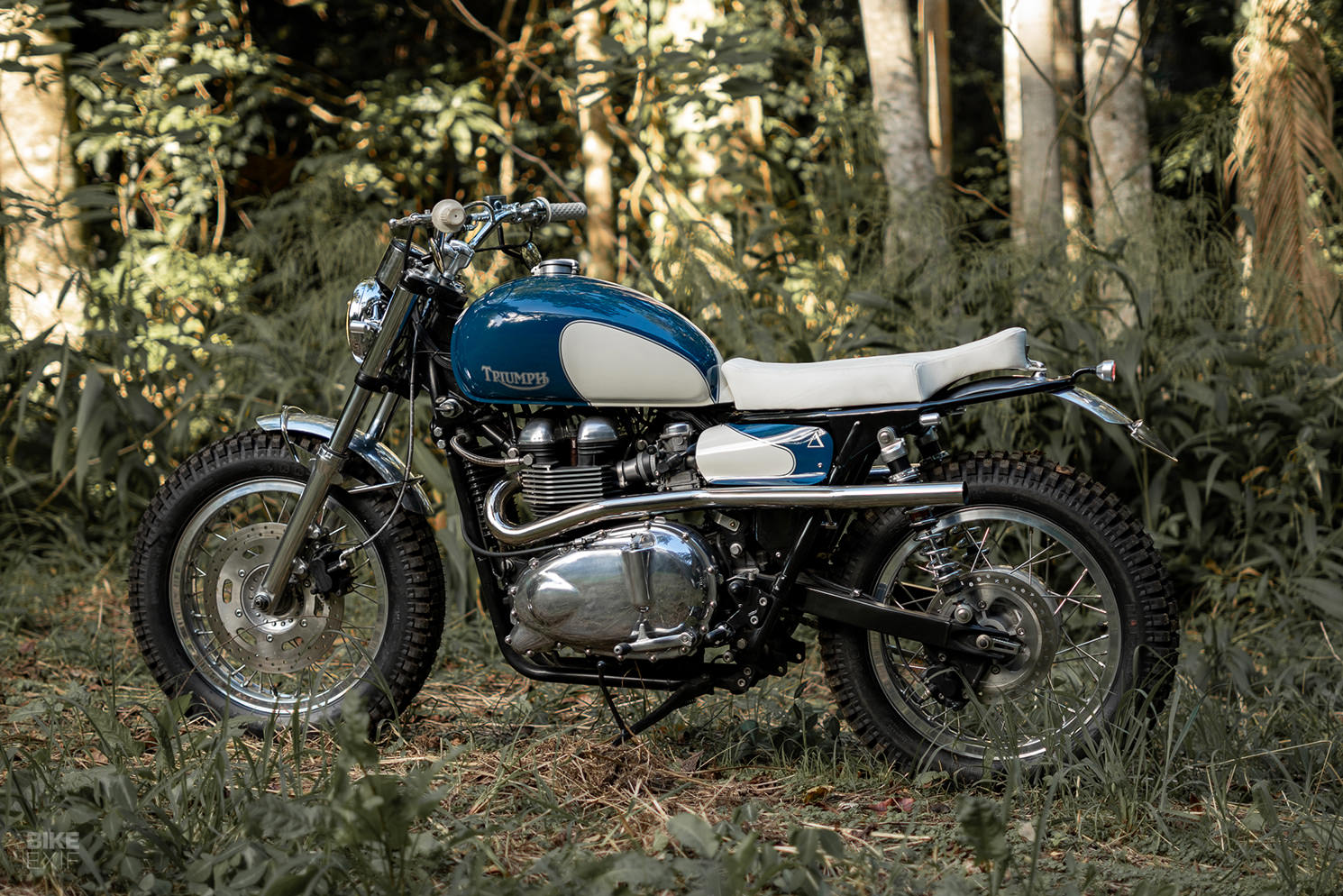
With a low-mileage example sourced, PBM boss, Tom Gilroy, pondered how to approach the scrambler build. “Old desert sleds were street bikes stripped down, with knobby tires, lifted suspension and as much weight as possible removed, pointed at a searing hot desert and held wide open for as long as you could hang on,” he says.
“The bikes were slapped together with crudely modified parts, and anything the riders and mechanics could get their hands on, in the name of speed. I love the idea that drove this form of racing, especially the privateers that were out there giving it a go.”
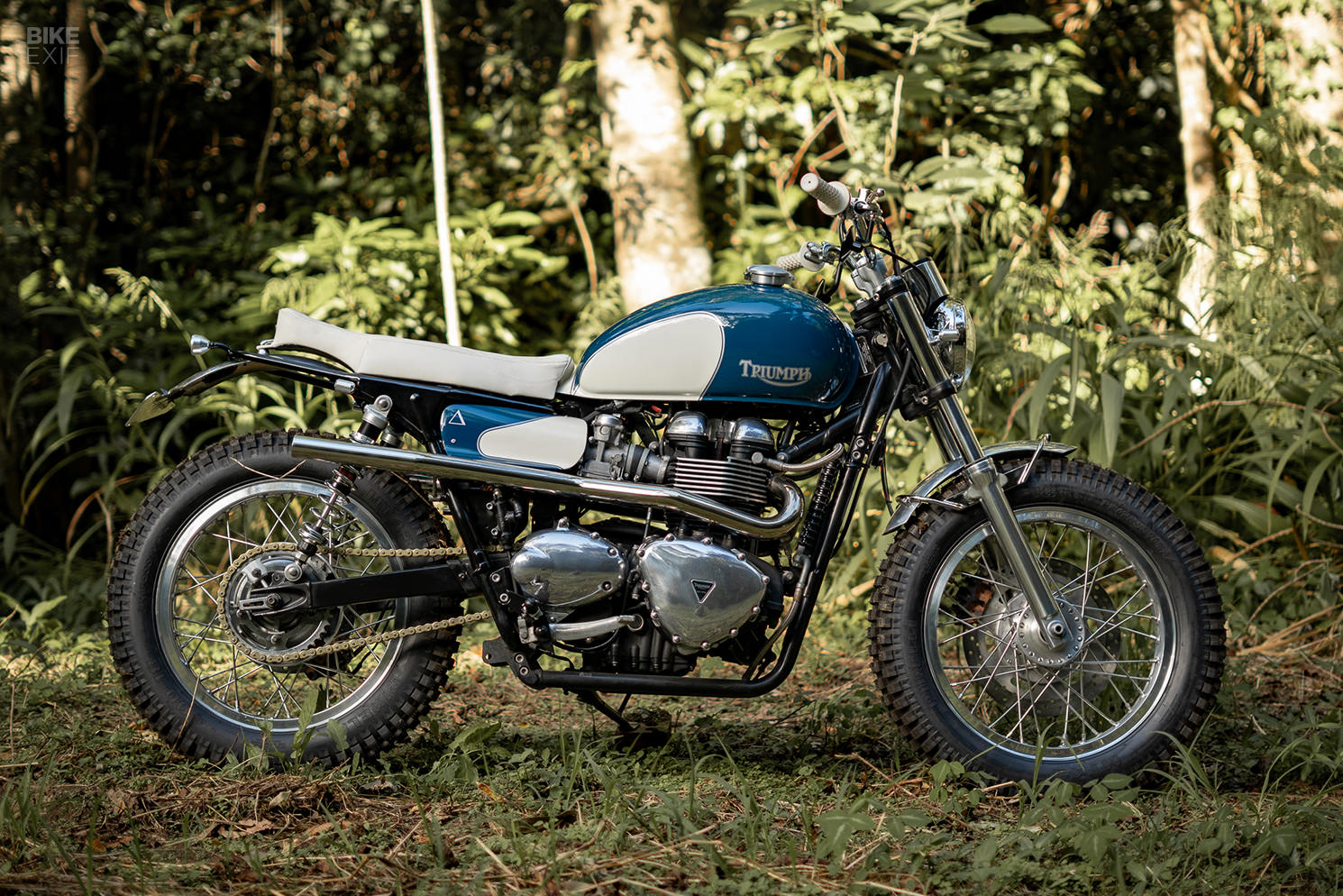
The PBM crew started by tearing the fuel injected, air-cooled Bonneville down to its bare bones, then focussing on its stance. The front forks were stripped, polished and rebuilt with stiffer internals. And the rear end was picked up slightly, thanks to a new set of YSS shocks.
The original Bonneville hubs were re-laced to a pair of polished 18” H type rims, then shod with Pirelli MT43 trial tires. “And there was our riding stance,” says Tom.
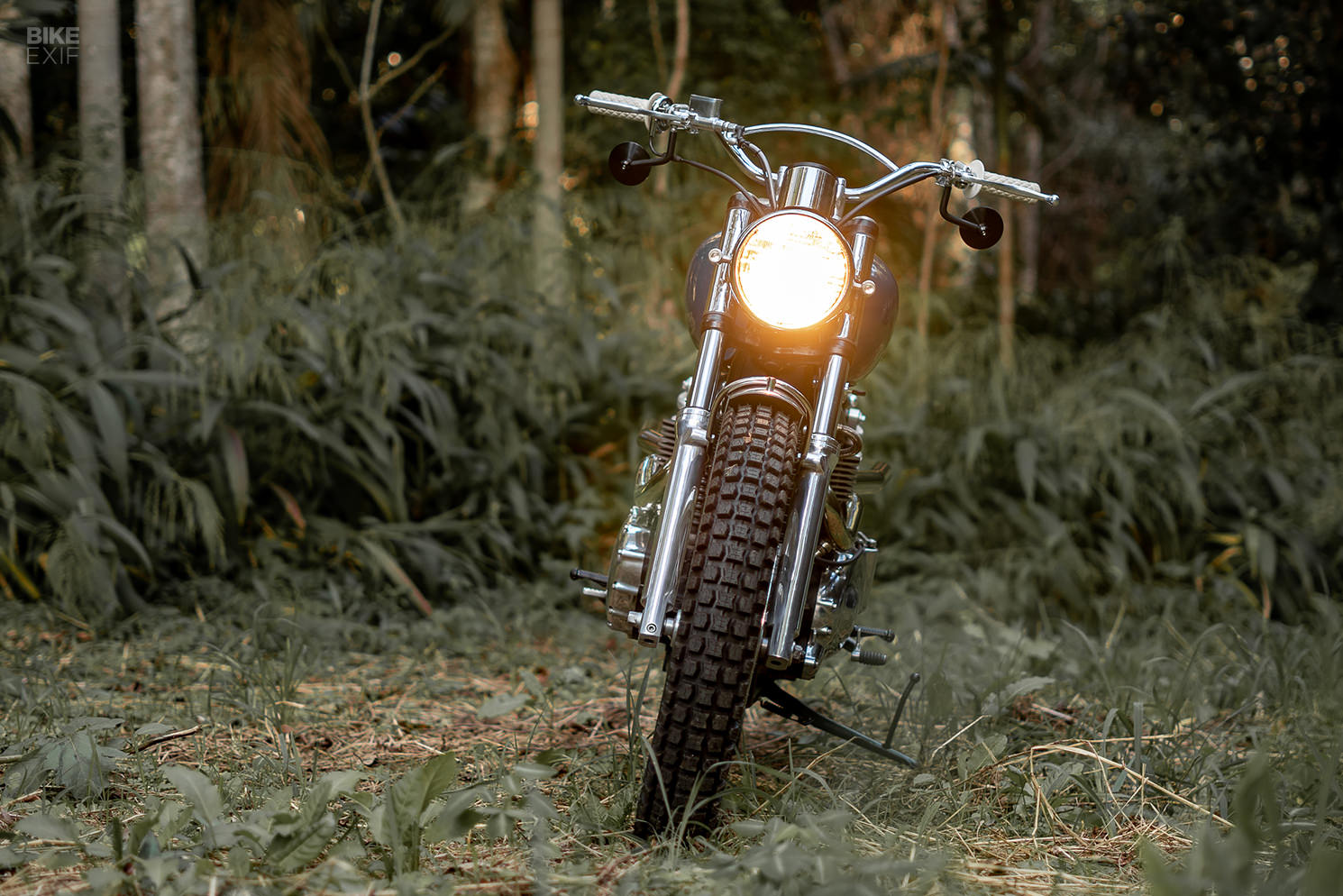
With the rolling chassis perched on the bench, PBM started visualizing all the bits that they’d need to fabricate. Their client had a few specific requests—starting with a set of custom-built Webco-style handlebars, which are essentially high-bend tracker bars with a rounded crossbar. “They’re very fitting for the style,” says Toms, “so I was happy to oblige.”
Next, PBM took a DIY fender kit from their own catalog, and used it to fabricate the Bonneville’s tidy new front fender and brace. But when it came to looping the subframe and creating a suitable rear fender, things got tricky.
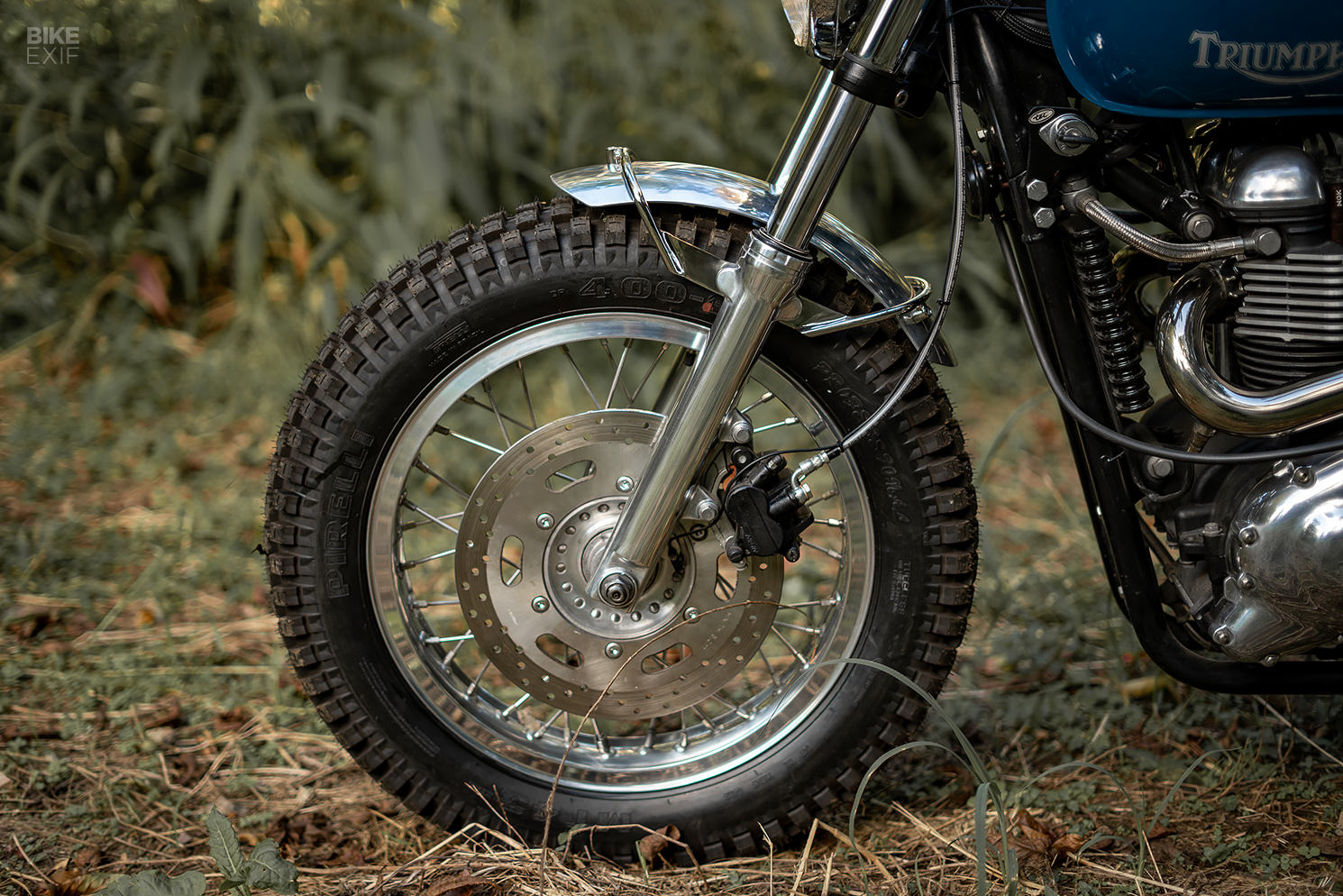
“Not because it was hard to build,” adds Tom, “but because it was hard to wrap my head around creating something so ill fitting. The idea here was to intentionally make the seat and fender not fit perfectly. Remember what I said about these bikes being slapped together?”
“I had to channel that and build the worst fitting fender and seat set up I’ve ever done.”
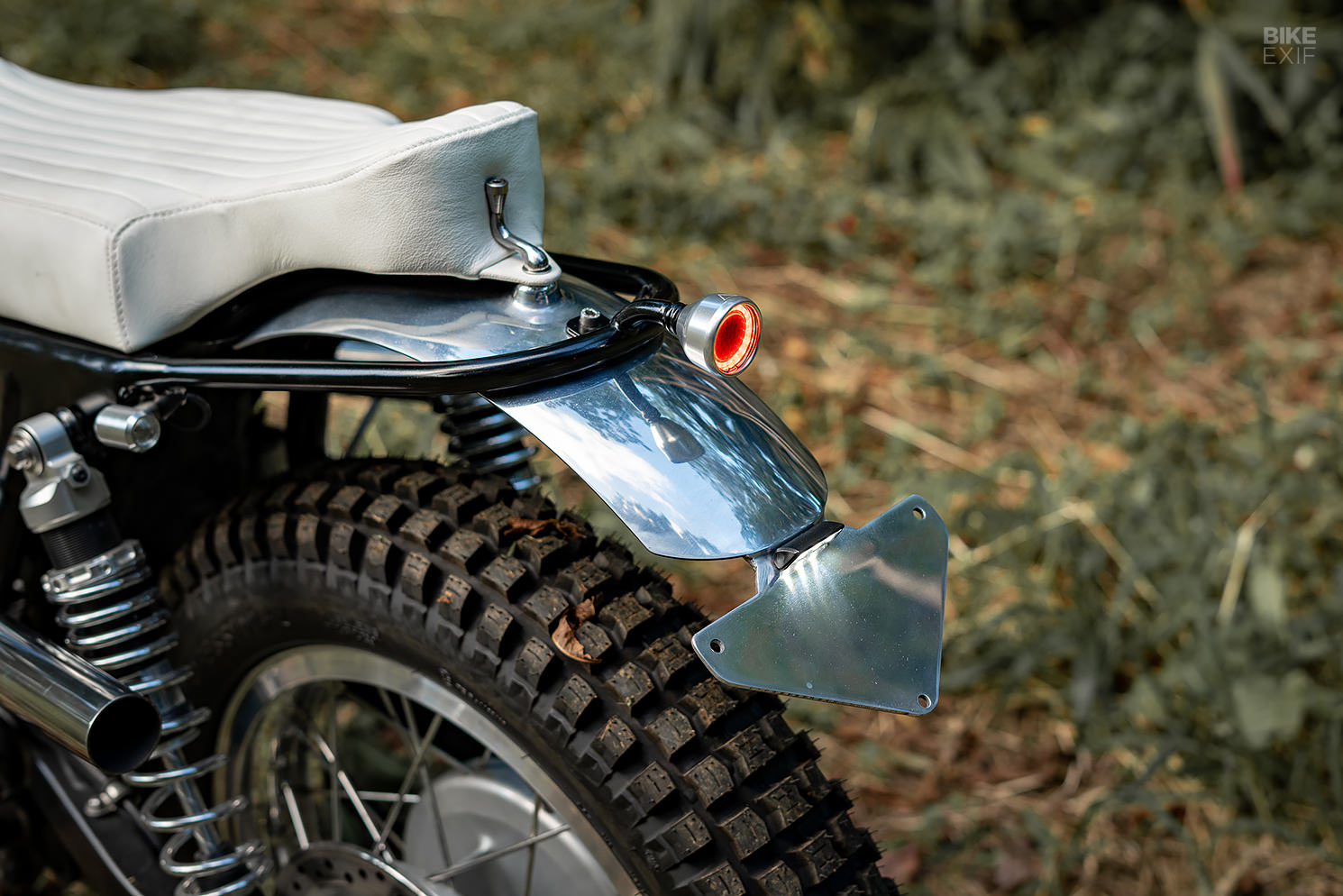
Tom started by hacking off the rear frame rails, and fabricating a loop that could double up as a grab rail and fender mount. A PBM tail light pokes out the back, with its wiring discreetly routed back to an electronics tray under the seat. A pair of turn signals sit just behind the shock mounts, while a license plate mount is welded directly to the rear fender.
“The seat pan was given the same horrible fit, with air gaps and cut-outs galore,” says Tom. “We built it in a Bates style, and mounted it to the fender directly by way of a hand made seat bolt. A tiny little crank handle that latches into a hidden channel behind the seat leather allows for removal of the seat, without any tools.”
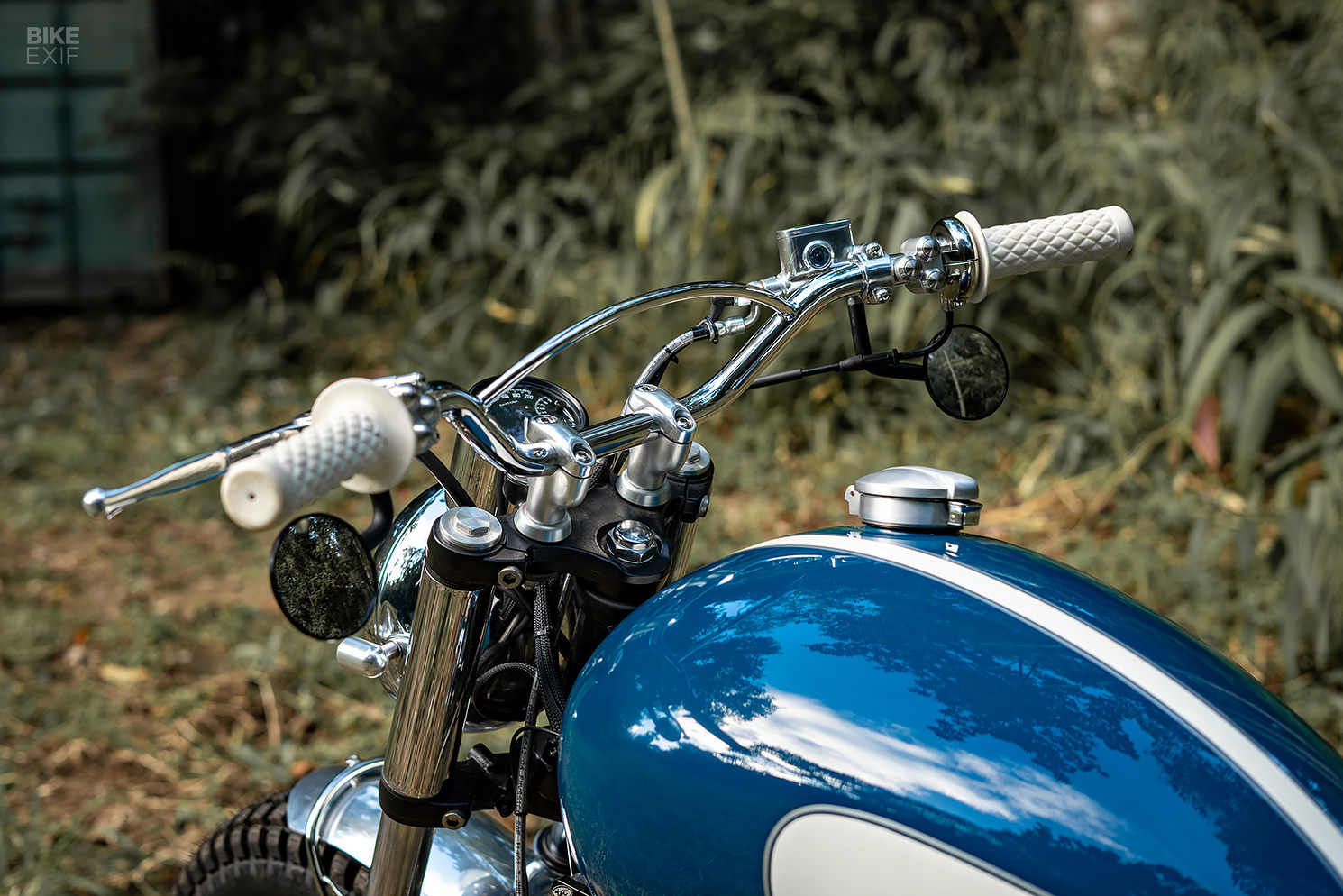
Moving to the front, PBM installed new risers to hold the custom handlebars, then added new grips, push buttons, KustomTech levers, and underslung mirrors. Custom fork sleeves hold a pair of LED turn signals, with a vintage style headlight. “Most of our builds wear the PBM LED headlight range,” Tom adds, “but if they’re not right for the build, I’m not going to force it.”
Just above the headlight sits a stainless steel speedo cup, holding an all-in-one Daytona gauge. Like the bars, headlight bucket, fork shrouds and OEM engine covers, it’s bright and shiny—just like a vintage bike.
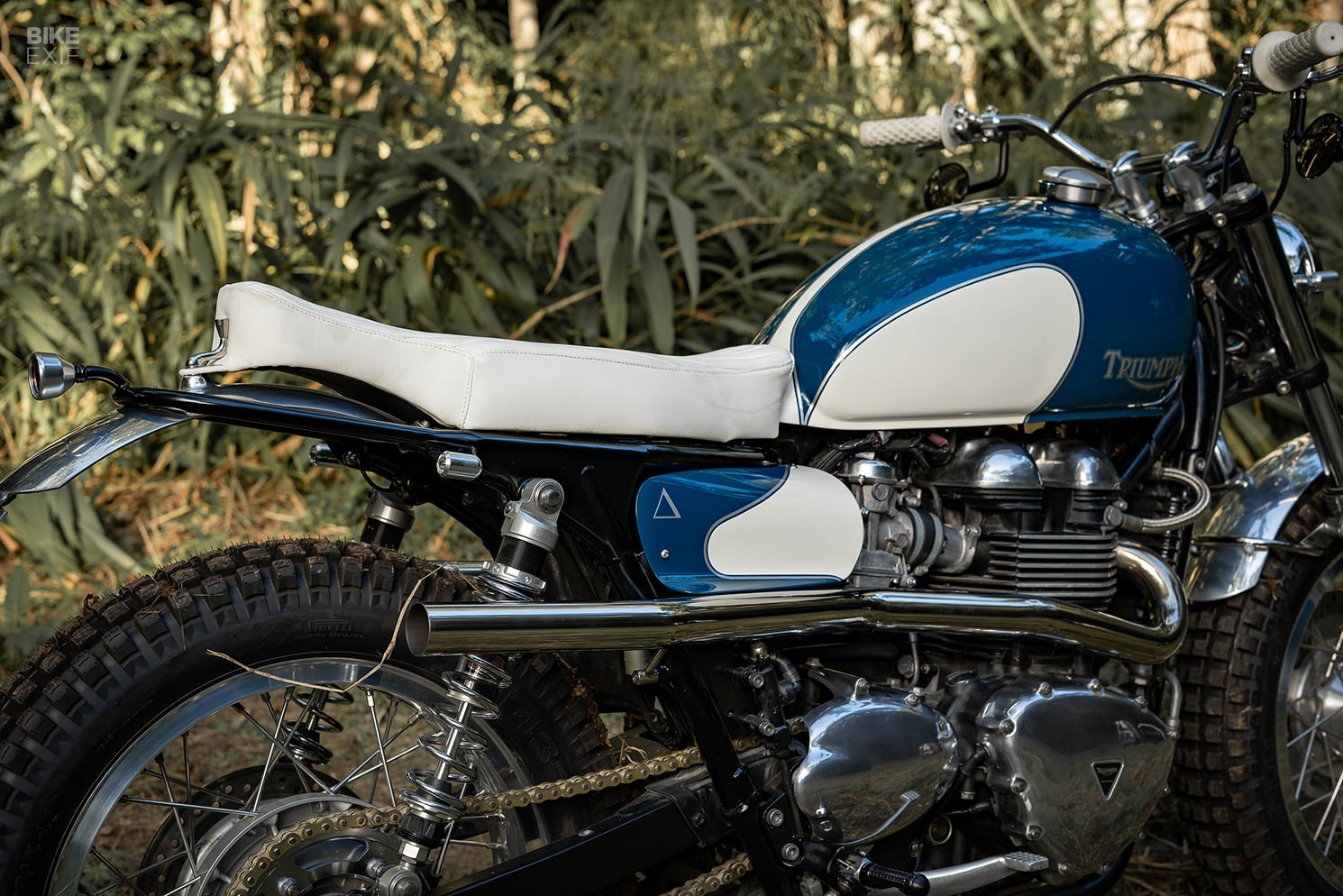
All that was left was to make new side covers, and finalize an exhaust design. PBM had removed the airbox, but kept the stock battery box and fuse box—so they needed something to hide those behind. The exhaust had to come first though.
“Desert sled means high pipes,” says Tom. “So twin high pipes were the answer, with oversized header and hidden muffler sections, to give them that distinct 60s straight pipe look, but subdue their bark enough to keep the neighbors happy. The lines of these bikes allows the exhaust to tuck in nice and close, which helped us avoid the need for heat shields on the sections that may come into contact with the rider.”
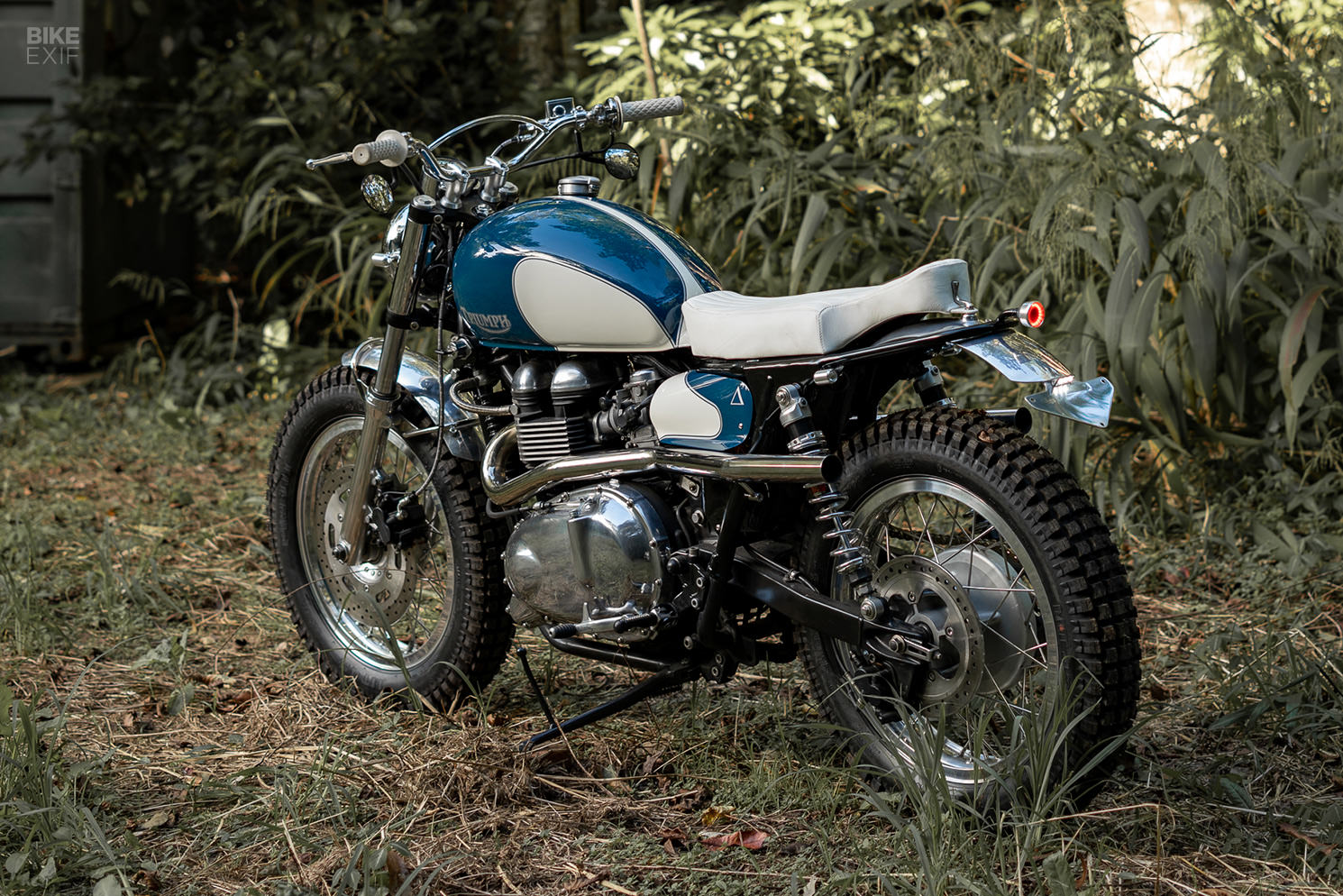
Once the exhausts were built, PBM hammered out a pair of aluminum side covers to to complement the overall aesthetic. With everything bolted to the bike in bare metal, Tom broke out some painters tape and markers, and began laying down a template for the build’s livery. Justin at PopBang Paint took it from there, dressing the Triumph in a stunning combination of blue and off-white.
As for the white seat, that, according to Tom, was unavoidable. “I had a creeping feeling it was time for me to do a white seat, and this was the perfect bike for it. It was trimmed up by Vintage Seat Co. on the Gold Coast. This seat and grips combo will only get better with age, as they get dirty and work in to show their age a little better.”
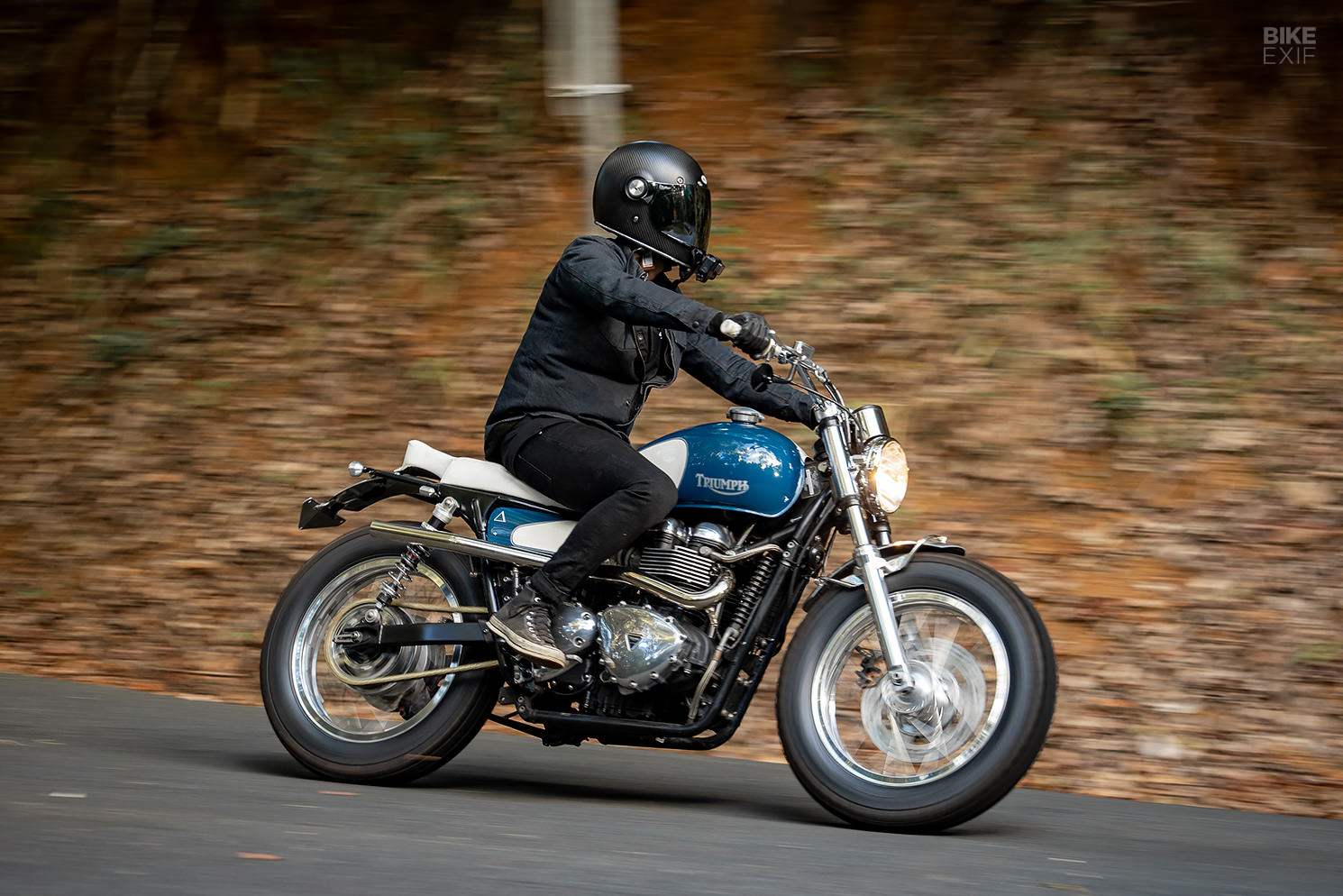
Purpose Built Moto’s work has dragged the Bonneville deeper into the past, while also giving it a timeless look that’ll suit any decade. As modern classics go, it doesn’t get much better than this.
Purpose Built Moto | Facebook | Instagram | Images by Brandan Trudinger